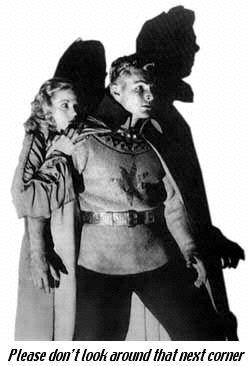2. Middles
| |
(ii) REVERSALS & TURNAROUNDS |
In the middle of a novel, you can go a little slower than at the beginning or climax, maybe, but you still have to maintain tension and excitement. You still need ups and downs, hopes and threats, knife-edges where the decision could go either way.
This is where genre novels don’t imitate real life. In real-life criminal investigations, according to those who know, the person eventually found guilty is most often the person who was suspected in the first place. No reversals or turnarounds, just slow hard work and steady progress. Not very exciting.
Or consider a story that my stepson (hi Chris!) wrote in primary school about a running race. It went something like –
The starter gave the signal and I took off before the others.
We ran round the first bend and I was in the lead.
We ran round the second bend and I was even more in the lead.
I could see the finishing tape and I was five metres ahead.
I won.
True to life? It was true to most of Chris’s races in primary school. And in sporting contests generally, early advantage tends to lead on to greater advantage, which tends to lead on to final victory. But sporting contests never happen like that in genre fiction!
Chris’s running race story, like real-life criminal investigations, lacks a middle. A good middle needs reversals and turnarounds, changes of fortune.
Wise old Aristotle in his Poetics said that the better kind of plot works through sudden changes of fortune, which he called peripeteia. See, I told you I was once a uni lecturer!
|





